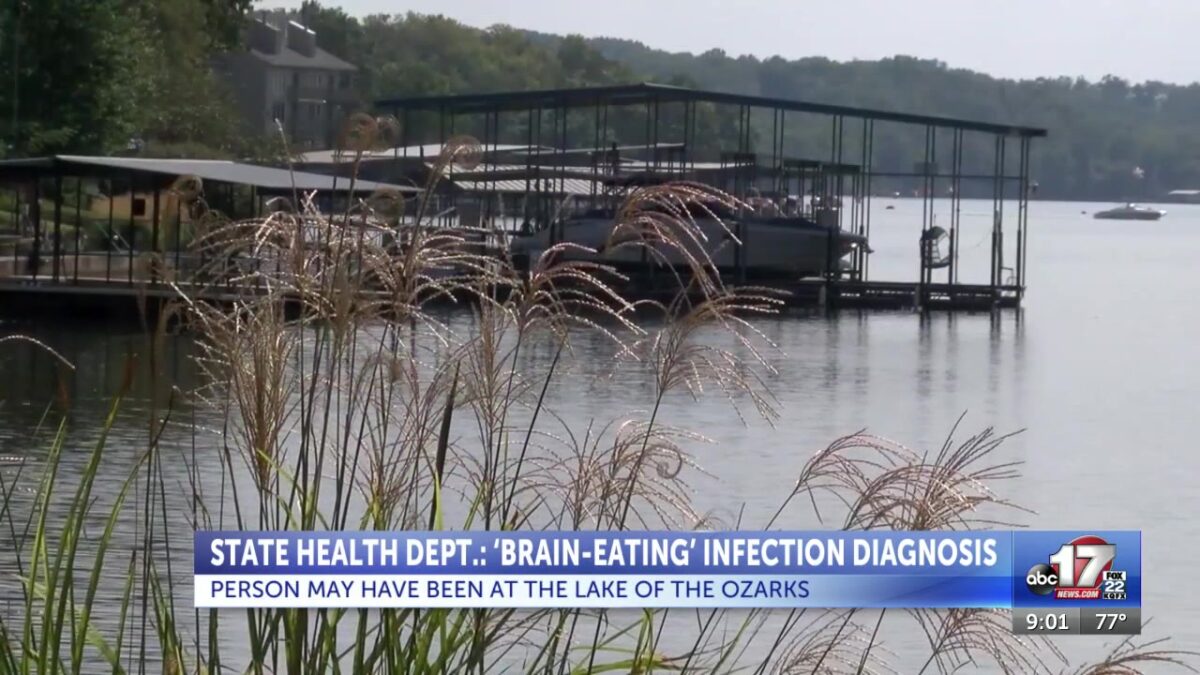DHSS: Person diagnosed with ‘brain-eating’ infection may have been at Lake of the Ozarks

Ryan Shiner
COLUMBIA, Mo. (KMIZ)
The Missouri Department of Health and Senior Services claims someone who contracted a rare brain infection may have been water skiing at the Lake of the Ozarks.
A Wednesday press release from the DHSS says a Missouri resident has a laboratory-confirmed infection of Naegleria fowleri, which is a microscopic single-celled free-living ameba that can cause an infection called primary amebic meningoencephalitis, also known as “brain-eating” infection.
“You can think of it as a one-celled animal that lives, in this case, freshwater. As far as symptoms we’re really concerned about when that amoeba gets, all the way up the sinuses and into the brain,” Nathan Koffarnus, an Epidemiologist at DHSS, told ABC 17 News. “It gets pretty severe pretty quickly.”
Fewer than 10 people in the United States contract it each year, the release says.
“In the United States, in the past 62 years, it’s averaged under three cases a year. So it’s so not common. But, this is the time of year that we are more concerned with warm weather, warm water, so we want people to take appropriate precautions if they’re using recreational freshwater,” Koffarnus said.
The release does not say where in the state the patient is from. They are being treated in an intensive care unit, the release says.
“The source of the patient’s exposure is currently being investigated by public health officials. While not confirmed, preliminary information implies the patient may have been water skiing at the Lake of the Ozarks days prior to becoming ill,” the release says. “Recreational water users should assume that Naegleria fowleri is present in warm freshwater across the United States; however, infection remains very rare.”
While infections are rare, Naegleria fowleri infections only have a 5% survival rate, according to the National Library of Medicine. From 1962-2018, there were 381 reported cases across 33 countries. While the CDC does have recommended treatment, Koffarnus says that the lack of cases has made it difficult to treat.
“One of the things that goes along with it being a less common illness, I’d say, is that there’s less opportunity to test some of those drug regimens. So there have been some people that have survived this,” Kaoffarnus said. “The hope is that as they get a chance to test out some of these experimental drugs and regimens, that maybe it’ll be more survivable in the future.”
Naegleria fowleri can be found in any type of freshwater, but are more prominent in warm water. Temperatures above 86 degrees Fahrenheit create a favorable environment for the amoeba, with survival and infection being impossible during the winter.
“We could probably find it in any freshwater source. It’s, you know, it’s naturally occurring. They do really like warm water, so they reproduce. There’s more of them present this time of year when the water is warm,” Koffarnus said. “Less common in, say, manmade sources. So if we were talking about a pool or a water park or something like that, they should really only be there if there’s a failure of the chlorination system.”
Symptoms include severe headache, fever, nausea, vomiting, stiff neck, seizures, altered mental status, and hallucinations, with symptoms occurring one to nine days after exposure.
“One of the problems is by the time we find out about this illness, people are usually in a coma,” Koffarnus said.
The release calls the infection a “rare occurrence,” but gives tips on how to avoid it, including:
Holding your nose shut, using nose clips, or keeping your head above water when taking part in activities in bodies of warm freshwater, especially if you jump or dive into the water.
Avoid putting your head under the water in hot springs and other untreated thermal waters.
Avoid water-related activities in warm freshwater during periods of high-water temperature.
Avoid digging in, or stirring up, the sediment while taking part in water-related activities in shallow, warm freshwater areas. Naegleria fowleri amebas are more likely to live in sediment at the bottom of lakes, ponds and rivers.
Another case was confirmed in the US last month in South Carolina. The release says between 1962-2024, 167 cases of PAM were reported around the country.
“Tens of thousands, hundreds of thousands of people that, use Missouri Lakes, streams, rivers during the summer,” Koffarnus said. “Again, this is only the third ever known infection.”